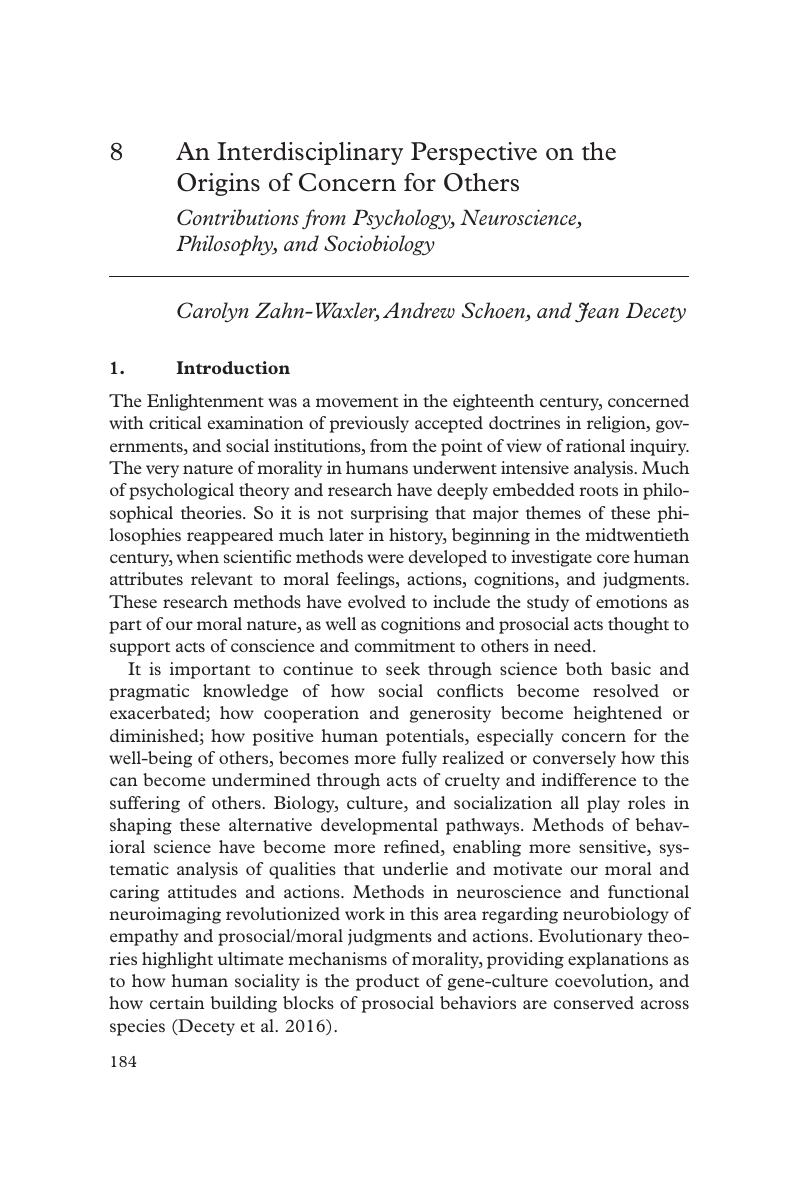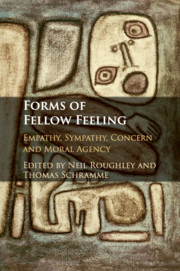Book contents
- Forms of Fellow Feeling
- Forms of Fellow Feeling
- Copyright page
- Contents
- Notes on Contributors
- I Introduction
- II Empathy, Sympathy and Concern
- III Understanding Empathy
- IV Fellow Feeling and the Development of Prosociality
- 7 Empathy-Related Responding and Its Relations to Positive Development
- 8 An Interdisciplinary Perspective on the Origins of Concern for Others
- 9 Sophisticated Concern in Early Childhood
- V Empathy and Morality
- Author Index
- Subject Index
- References
8 - An Interdisciplinary Perspective on the Origins of Concern for Others
Contributions from Psychology, Neuroscience, Philosophy, and Sociobiology
from IV - Fellow Feeling and the Development of Prosociality
Published online by Cambridge University Press: 28 December 2017
- Forms of Fellow Feeling
- Forms of Fellow Feeling
- Copyright page
- Contents
- Notes on Contributors
- I Introduction
- II Empathy, Sympathy and Concern
- III Understanding Empathy
- IV Fellow Feeling and the Development of Prosociality
- 7 Empathy-Related Responding and Its Relations to Positive Development
- 8 An Interdisciplinary Perspective on the Origins of Concern for Others
- 9 Sophisticated Concern in Early Childhood
- V Empathy and Morality
- Author Index
- Subject Index
- References
Summary

- Type
- Chapter
- Information
- Forms of Fellow FeelingEmpathy, Sympathy, Concern and Moral Agency, pp. 184 - 215Publisher: Cambridge University PressPrint publication year: 2018
References
- 8
- Cited by



